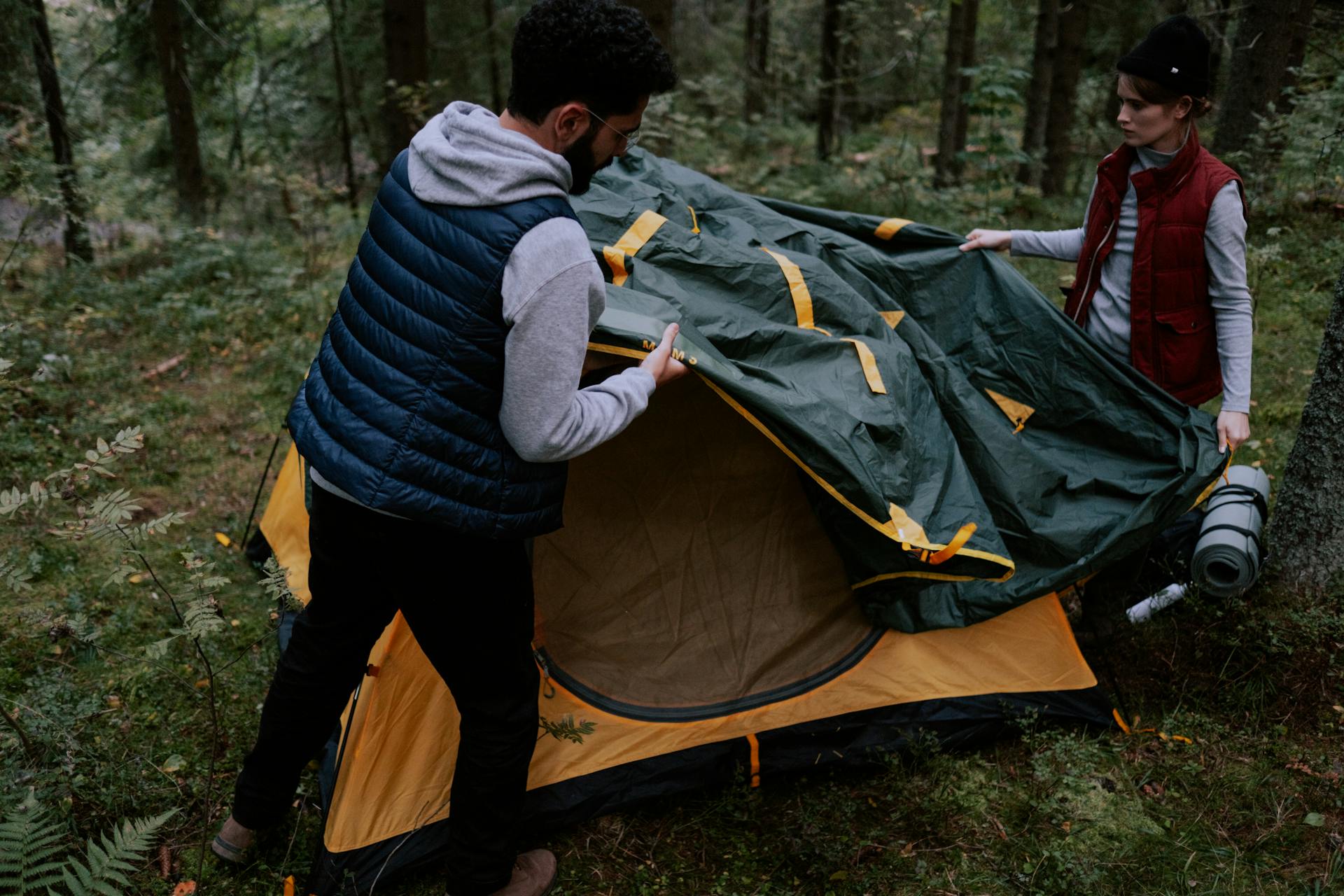Camping is one of the most rewarding outdoor activities, but it can be marred by frustrating gear malfunctions. Whether you’re a seasoned camper or a novice, equipment failure can quickly turn a fun adventure into a stressful experience. From tents collapsing in the middle of a storm to stoves refusing to ignite, gear malfunctions are an unfortunate reality of outdoor life. The good news is that most common camping gear problems can be prevented or easily fixed with a bit of knowledge and preparation. This guide covers how to beat common camping gear malfunctions, ensuring you’re ready for anything on your next trip.
1. Tent Trouble: Leaks, Collapses, and Condensation
Your tent is your sanctuary in the wilderness, but it’s also the most prone to malfunction. Here are some common tent problems and how to fix them:
Leaky Tents
One of the most frustrating tent camping challenges is a leaky tent. Heavy rain can quickly ruin a night under the stars if your tent isn’t adequately waterproof.
Solution:
- Pre-treat Your Tent: Before your trip, treat the tent with a waterproofing spray or sealant. Be sure to apply it to the tent’s rainfly and seams, which are the most vulnerable areas for water leakage.
- Check for Taped Seams: Many tents come with taped seams, but if yours doesn’t, make sure to seal them yourself using seam sealant.
- Pitch the Tent Properly: Ensure your tent is pitched on elevated ground, with the door facing away from prevailing winds and rain. This will minimize water pooling inside your tent.
- Use a Groundsheet: A groundsheet or footprint adds an extra layer of protection, preventing water from seeping through the bottom of the tent.
Collapsing Tent Poles
Tent poles are often subjected to stress and weather conditions that can cause them to bend, snap, or collapse, especially if they’re not properly maintained.
Solution:
- Check Poles Before You Go: Before heading out, inspect the tent poles for cracks or weakness. Look for any loose or missing pieces.
- Pack Extra Poles: It’s a good idea to carry a spare pole section or repair kit for emergency fixes. If a pole breaks, you can often make a quick fix with a splint or duct tape.
- Use Pole Repair Sleeves: If a pole cracks, you can insert a repair sleeve (often included in tent repair kits) to hold it together until you get back to civilization.
Condensation Buildup
Condensation inside your tent is a common issue, especially in humid conditions. This can lead to wet sleeping bags and a damp, uncomfortable environment.
Solution:
- Ventilate Your Tent: Proper ventilation is key to reducing condensation. Open vents or mesh windows to allow air to circulate. Ensure that any vents you open are sheltered from the rain.
- Choose a Tent with Proper Ventilation: Tents with multiple vents or those designed specifically for humid conditions can help prevent excess moisture from accumulating inside.
- Use a Moisture-Wicking Sleeping Bag: Consider using a sleeping bag with moisture-wicking properties to keep the inside dry. Adding a liner to your sleeping bag can also help reduce condensation buildup.
2. Stove and Cooking Gear Malfunctions
Cooking meals over a campfire or stove is one of the joys of camping, but stoves can sometimes malfunction, leaving you hungry and frustrated. Here are common stove issues and how to fix them:
Stove Won’t Ignite
It’s incredibly frustrating when your stove refuses to light, especially in cold or wet conditions.
Solution:
- Check the Fuel: Ensure you have enough fuel and that the canister is properly attached. Sometimes fuel can run out or the connection may be loose.
- Clean the Burner: Over time, burners can get clogged with grease or dirt. If your stove won’t ignite, clean the burner with a small brush or compressed air.
- Check the Igniter: If your stove has a built-in igniter, it might be faulty. Try lighting the stove with a match or lighter. If it works, then the igniter needs to be replaced.
- Keep Spare Lighters and Matches: Always bring extra lighters and waterproof matches. These are handy backups in case your stove’s igniter malfunctions.
Burners Not Heating Properly
Sometimes, a burner will light but not heat up properly, making it difficult to cook your food.
Solution:
- Adjust the Flame: If the flame is too low, try adjusting the burner knob. If it’s still not working, the problem could be a clogged jet.
- Clean the Burner: Over time, food particles and grease can block the burner jets. Clean them thoroughly with a small wire brush or needle.
- Use the Correct Fuel: Make sure you’re using the appropriate fuel for your stove model. Using the wrong type can cause poor performance.
3. Sleeping Bag Mishaps: Dampness, Zipper Problems, and More
A good night’s sleep is essential for a successful camping trip, but sleeping bag malfunctions can quickly put a damper on things. Here’s how to fix common issues:
Damp Sleeping Bags
A damp sleeping bag can make for an uncomfortable and cold night in the wilderness.
Solution:
- Pack a Liner: A sleeping bag liner can help keep moisture from reaching your sleeping bag. It’s also much easier to dry a liner than a full sleeping bag.
- Use a Waterproof Stuff Sack: Always store your sleeping bag in a waterproof stuff sack when it’s not in use. This will protect it from getting wet in rainstorms or morning dew.
- Dry the Sleeping Bag: If your sleeping bag does get wet, hang it up in a dry, ventilated area (like a tree or tarp) to dry out. Some campgrounds have drying areas for such occasions.
Zipper Problems
Zippers can get stuck or break, leaving you struggling to get in or out of your sleeping bag.
Solution:
- Lubricate the Zipper: If the zipper is stuck, try lubricating it with a bar of soap, candle wax, or a special zipper lubricant.
- Fix a Broken Zipper: If the zipper breaks entirely, you can often fix it temporarily by sewing it shut with heavy-duty thread or using duct tape. Make sure to replace the zipper when you get home.
4. Backpack and Gear Failures
A malfunctioning backpack or gear can make hiking and camping more difficult than it needs to be. Here’s how to fix common backpack issues:
Broken Straps
Straps on backpacks are prone to wear and tear, especially if they’re overloaded or frequently exposed to the elements.
Solution:
- Reinforce with Duct Tape: If a strap breaks, duct tape can hold it in place long enough to finish your trip. You can also use a paracord or a length of rope to tie a temporary fix.
- Use a Repair Kit: A good backpack repair kit should include extra webbing, buckles, and thread for patching up broken straps.
Leaky Hydration Reservoir
Your hydration reservoir (or water bladder) can develop leaks, making it difficult to stay hydrated.
Solution:
- Inspect for Holes: Before your trip, inspect the reservoir for any holes or weak spots. If you find any, patch them with waterproof tape or buy a new bladder if necessary.
- Clean It Regularly: To prevent mold and leaks, clean the bladder thoroughly before and after each use. Use a cleaning brush to scrub out any debris.
5. Other Common Gear Malfunctions
Here are a few more common camping gear problems and their solutions:
Flashlights and Headlamps Not Working
Dead or malfunctioning flashlights and headlamps can quickly become a safety concern, especially during night hikes or around camp.
Solution:
- Check the Batteries: Ensure you’re using fresh batteries and check if the battery contacts are clean. If they’re corroded, clean them with a cloth or vinegar.
- Use a Backup: Always bring a spare flashlight or headlamp and extra batteries in case of malfunction.
Cooking Gear Stoves and Pots
Cooking gear malfunctions can ruin your meals.
Solution:
- Check for Leaks or Damage: Regularly inspect your pots, pans, and stove for damage, especially if they’ve been dropped or exposed to extreme conditions.
- Use the Right Gear: Always use the appropriate cooking gear for your campfire or stove setup, and ensure all pots and pans are in good working condition before your trip.
Conclusion
Camping gear malfunctions are common, but with the right preparation, you can easily prevent or fix many of the most common problems. Regularly check and maintain your equipment before your trip, bring backup supplies, and learn basic gear repair techniques. Whether it’s your tent leaking, your stove refusing to light, or your sleeping bag getting wet, knowing how to troubleshoot and fix these issues will ensure a more enjoyable and stress-free camping experience. With the right tools and mindset, you’ll be ready to handle anything the great outdoors throws your way.

